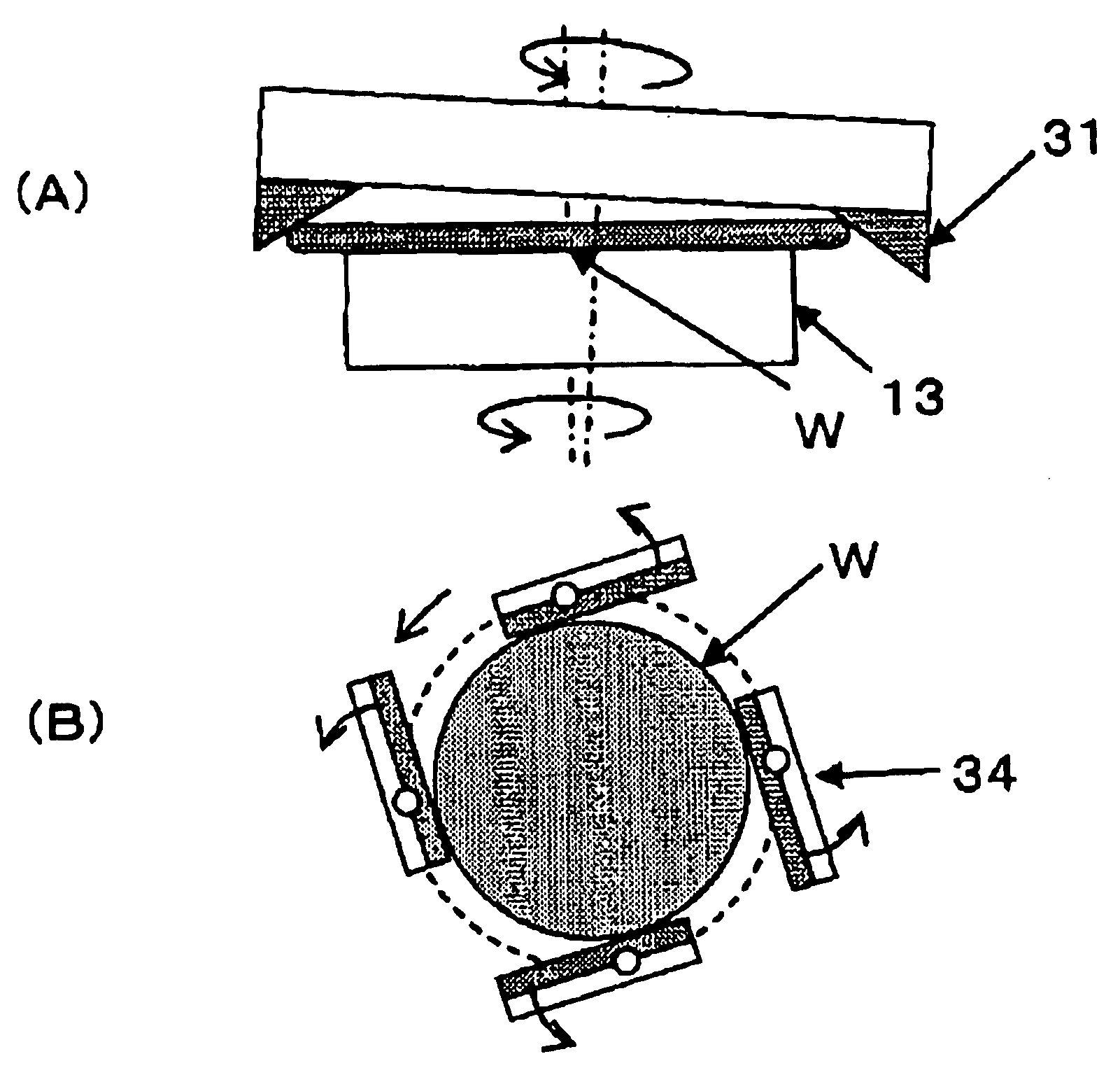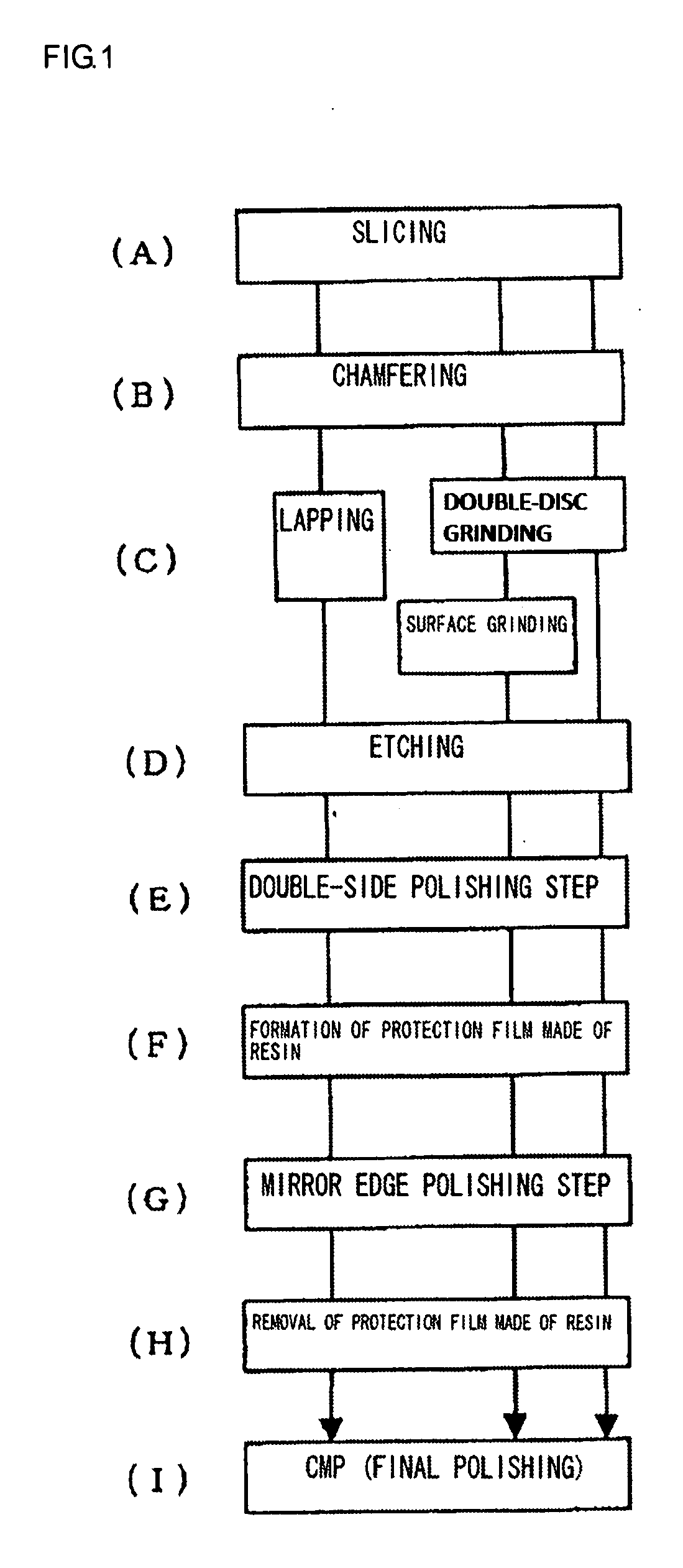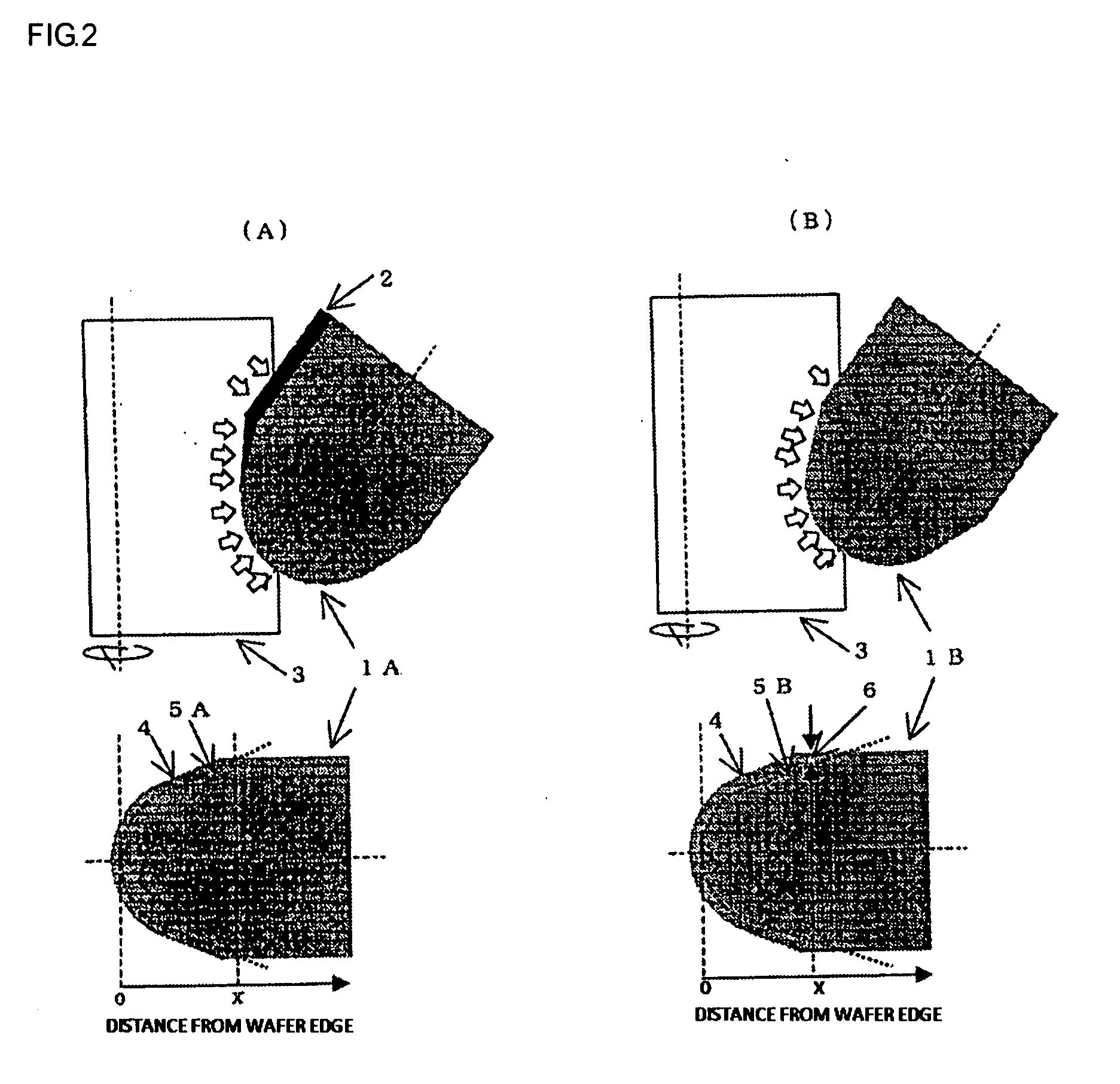Semiconductor Wafer Fabricating Method and Semiconductor Wafer Mirror Edge Polishing Method
a semiconductor and fabricating method technology, applied in the direction of edge grinding machines, manufacturing tools, lapping machines, etc., can solve the problems of degrading a roll-off amount, affecting the yield, and unable to completely avoid defects, etc., to achieve the effect of excessive polishing and low cos
- Summary
- Abstract
- Description
- Claims
- Application Information
AI Technical Summary
Benefits of technology
Problems solved by technology
Method used
Image
Examples
example
[0089]Such a double-side polishing apparatus as depicted in FIG. 6 was used to perform double-side polishing with respect to a silicon wafer having a diameter of 300 mm obtained by sequentially effecting respective processes, i.e., slicing, chamfering, lapping, and etching.
[0090]After double-side polishing, an acrylic resin (a product name: Sky Coat manufactured by Nikka Seiko Co., Ltd.) was applied by using a spin coater to form protection films each having a thickness of approximately 3 μm on both surfaces of the wafer W. At this time, the number of revolutions of the spin coater was determined as 1200 rpm, the protection films were formed on the main surfaces alone of the front and back surfaces, and the protection film was prevented from being formed on a wafer edge surface. Then, a chamfered surface on each main surface side at a chamfered part of the wafer W was brought into contact with a polishing pad to mirror-polish the chamfered part (FIG. 2(A): the protection film is sho...
PUM
 Login to View More
Login to View More Abstract
Description
Claims
Application Information
 Login to View More
Login to View More - R&D
- Intellectual Property
- Life Sciences
- Materials
- Tech Scout
- Unparalleled Data Quality
- Higher Quality Content
- 60% Fewer Hallucinations
Browse by: Latest US Patents, China's latest patents, Technical Efficacy Thesaurus, Application Domain, Technology Topic, Popular Technical Reports.
© 2025 PatSnap. All rights reserved.Legal|Privacy policy|Modern Slavery Act Transparency Statement|Sitemap|About US| Contact US: help@patsnap.com



